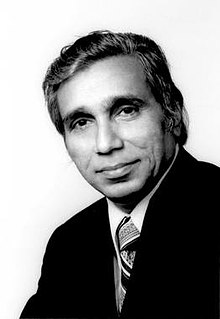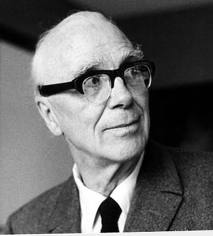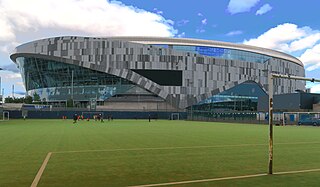Related Research Articles
Leslie Earl Robertson was an American engineer. He was the lead structural engineer of the Twin Towers of the original World Trade Center in New York City, and served as structural engineer on numerous other projects, including the U.S. Steel Tower in Pittsburgh, Shanghai World Financial Center, and the Bank of China Tower in Hong Kong.
The year 2001 in architecture involved some significant architectural events and new buildings.

Fazlur Rahman Khan was a Bangladeshi-American structural engineer and architect, who initiated important structural systems for skyscrapers. Considered the "father of tubular designs" for high-rises, Khan was also a pioneer in computer-aided design (CAD). He was the designer of the Sears Tower, since renamed Willis Tower, the tallest building in the world from 1973 until 1998 and the 100-story John Hancock Center.
Arup is a British multinational professional services firm headquartered in London which provides design, engineering, architecture, planning, and advisory services across every aspect of the built environment. The firm employs approximately 16,000 staff in over 90 offices across 35 countries around the world. Arup has participated in projects in over 160 countries.

Sir Ove Nyquist Arup, CBE, MICE, MIStructE, FCIOB was an English engineer who founded Arup Group Limited, a multinational corporation that offers engineering, design, planning, project management, and consulting services for building systems. Ove Arup is considered to be among the foremost architectural structural engineers of his time.
Buro Happold is a British professional services firm that provides engineering consultancy, design, planning, project management, and consulting services for buildings, infrastructure, and the environment. It was founded in Bath, Somerset, in 1976 by Sir Edmund Happold when he took up a post at the University of Bath as Professor of Architecture and Engineering Design.

A building engineer is recognised as being expert in the use of technology for the design, construction, assessment and maintenance of the built environment. Commercial Building Engineers are concerned with the planning, design, construction, operation, renovation, and maintenance of buildings, as well as with their impacts on the surrounding environment.
Ramboll Group A/S is a Danish consulting engineering group.
Whitbybird was a privately owned structural engineering consultancy, founded in 1984 by Mark Whitby and Bryn Bird. It was initially named Whitby and Bird, then Whitby Bird & Partners and finally Whitbybird. The practice was joined in 1984 by Mike Crane and shortly afterward Tony Greatorex who were to form the core partnership until they incorporated in October 2000. In 2005 they had 300 staff members, six offices in the UK and one in Dubai.
Frank Newby was one of the leading structural engineers of the 20th century, working with such architects as Philip Powell and Hidalgo Moya, Eero Saarinen, Cedric Price,James Gowan (architect) James Stirling, and the practice of Skidmore, Owings and Merrill (SOM), and such engineers as Ove Arup and Felix Samuely.

The Institution of Structural Engineers' Structural Awards have been awarded for the structural design of buildings and infrastructure since 1968. The awards were re-organised in 2006 to include ten categories and the Supreme Award for structural engineering excellence, the highest award a structural project can win.
Povl Ahm CBE FICE FREng was a structural engineer and former chairman of Ove Arup & Partners.
Anthony Hunt, familiarly known as Tony Hunt, is an English structural engineer of numerous world-renowned buildings, with a career spanning from the 1950s until his retirement in 2002. As a leading proponent of British High Tech architecture and with a strong interest in both engineering and industrial design, Hunt was a major player in creating the High Tech movement of Norman Foster and Richard Rogers. He formed Anthony Hunt Associates in 1962. He worked with Rogers and Foster on Reliance Controls building in Swindon (1966) which was the first building of the British High Tech architecture, or more generally the High Tech architecture style. He was also a structural engineer on the Waterloo International railway station in London (1993).

Hanif Mohamed Kara is a structural engineer and is design director and co-founder of London-based structural engineering practice AKT II. He has taught design internationally, is a member of the board of trustees for the Architecture Foundation and was a commissioner for CABE from 2008 to 2011. He is currently Professor in Practice of Architectural Technology at Harvard Graduate School of Design. He also taught as professor of Architectural Technology at KTH Royal Institute of Technology in Stockholm from 2009 until 2012. He lives in London with his wife and two daughters.
AKT II is a London based firm of structural and civil engineering consultants. It was founded as Adams Kara Taylor in 1996 by Hanif Kara, Albert Williamson-Taylor and Robin Adams. Now numbering over 350 employees, it is one of the largest structural engineers in London.
Fast + Epp is an international structural engineering firm headquartered in Vancouver, British Columbia with offices in Edmonton, Calgary, New York, Seattle, and Darmstadt, Germany. The company first achieved international acclaim following the design of the roof structure for the 2010 Richmond Olympic Oval and has become a world leader in the design of timber and hybrid steel-timber structures.
Jane Melville Wernick CBE FREng is a British structural engineer and a director of engineersHRW. Having founded Jane Wernick Associates in 1998, she gave the firm to an employee trust in 2010 and it was incorporated into engineersHRW in May 2015. Previously she worked at Arup (1976–1998). During her career with Arup, and later with Jane Wernick Associates, she was closely involved with projects including Stansted Airport terminal building and the London Eye.
Tristram George Allen Carfrae RDI FREng FTSE FRSA is a British and Australian structural engineer and designer. He is currently Deputy Chair of Arup and an Arup Fellow.

The Patera Building prototype, a significant example of British high-tech architecture, was manufactured in Stoke-on-Trent in 1982 by Patera Products Ltd. In 1980, Michael Hopkins architects and Anthony Hunt Associates engineers were instructed by LIH (Properties) Ltd to design a relocatable building 216 square metres in size.
British high-tech architecture is a form of high-tech architecture, also known as structural expressionism, a type of late modern architectural style that emerged in the 1970s, incorporating elements of high tech industry and technology into building design. High-tech architecture grew from the modernist style, using new advances in technology and building materials.
References
- ↑ "List of Fellows".
- ↑ Institution of Civil Engineers. "Past Presidents". Archived from the original on 22 August 2010. Retrieved 19 May 2008.
- 1 2 "Mark Whitby for Architects Journal". YouTube. Architects' Journal. Retrieved 24 September 2016.
- ↑ "King's College London Engineers' Association". King's College London. Retrieved 21 October 2016.
- ↑ "History". Richmond Canoe Club. Retrieved 20 October 2011.
- ↑ Sports-reference.com profile
- 1 2 3 4 Slavid, Ruth. "Prospects of Whitby". The Architects' Journal. The Architects' Journal. Retrieved 24 October 2016.
- ↑ Jackson, Neil (1996). The Modern Steel House. New York: Routledge. p. 189.
- ↑ Whitby, Mark (1999). The Engineer as Session Artist (in 'Engineering Architecture' ed.). Glasgow: The Department of Civil Engineering, The University of Glasgow.
- 1 2 3 Fransen, Peter (2008). Thinking People: The Story About Ramboll. Copenhagen: Ramboll Group A/S.
- ↑ Fairs, Marcus. "Mark Whitby". Building. Building, issue 40 2001. Retrieved 20 October 2016.
- ↑ "Ramboll Whitbybird Ltd becomes Ramboll UK Ltd". Ramboll. Ramboll Group A/S, 9 April 2009. Retrieved 21 October 2016.
- 1 2 Hope, Gerhard. "Face to Face: Mark Whitby and Peyman Mohajer". Construction Week Online. Construction Week Online, 19 November 2012. Retrieved 21 October 2016.
- 1 2 "Mark Whitby". Contraction & Convergence/Climate Truth & Reconciliation. Global Commons Institute. Retrieved 24 October 2016.
- ↑ "About Julian Richards". ARCHEmedia. Julian Richards. Retrieved 21 October 2016.
- ↑ "British Embassy". Allies and Morrison. Allies and Morrison. Retrieved 24 October 2016.
- ↑ "30 Finsbury Square". Eric Parry Architects. Eric Parry Architects. Retrieved 24 October 2016.
- ↑ "The Bartlett School of Architecture announces new visiting professors …". The Bartlett School of Architecture. University College London. Archived from the original on 4 November 2016. Retrieved 21 October 2016.